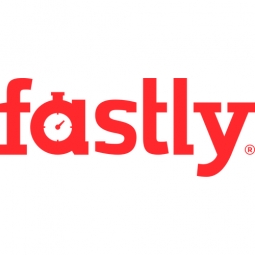Technology Category
- Application Infrastructure & Middleware - Event-Driven Application
- Infrastructure as a Service (IaaS) - Cloud Middleware & Microservices
Applicable Industries
- Cement
- National Security & Defense
Applicable Functions
- Logistics & Transportation
- Maintenance
Use Cases
- Inventory Management
- Tamper Detection
About The Customer
Filestack is a low code content API platform that enables developers to build automated content processing and analysis faster, with higher quality, and at less cost. Their scalable infrastructure powers billions of uploads, transformations, and downloads every month, providing unparalleled performance to users anywhere in the world. By eliminating the need to build and maintain a content ingestion stack, Filestack helps companies save time and money, allowing them to focus their resources on their own apps or software. Filestack's services include file uploads, file transformation, and delivery. They also offer a premium feature, CNAME, which allows their customers to format their Filestack URLs with a custom domain.
The Challenge
Filestack, a low code content API platform, was facing challenges in scaling their rapidly growing file management service. They were in need of a Content Delivery Network (CDN) that could support their expanding services in a reliable, cost-effective, and fast manner. Their service involved image transformation, which resulted in multiple versions of the same file, and they needed a way to invalidate these versions quickly. They also required customization at the edge, a large number of powerful and strategically located Points of Presence (POPs), and the ability to handle large file sizes. Additionally, Filestack was struggling with the management of Transport Layer Security (TLS) certificates, a task that was distracting their team from product development. They were also considering dropping a premium feature, CNAME, due to the burden of managing a certificate and private key for each customer.
The Solution
Filestack partnered with Fastly, a CDN provider, to scale their business and enhance security. Fastly's solutions enabled Filestack to scale their data transfer by nearly 20x. Fastly's purging and invalidation feature allowed Filestack to invalidate file versions in seconds, compared to the previous 15 minutes. Fastly's custom Varnish Configuration Language (VCL) provided the customization that Filestack needed, and their configuration versioning offered instant, one-click rollbacks. Fastly's high-density POPs ensured ultra-fast delivery for a seamless user experience. Fastly also helped Filestack manage large file sizes. Fastly's TLS management relieved Filestack from the cumbersome task of managing TLS certificates. It also allowed Filestack to scale their CNAME feature to hundreds of certificates. Filestack is also planning to implement Fastly's Compute@Edge for high performance, serverless computing at the edge, and Fastly's next-generation web application firewall (WAF) for enhanced security.
Operational Impact
Quantitative Benefit

Case Study missing?
Start adding your own!
Register with your work email and create a new case study profile for your business.
Related Case Studies.

Case Study
System 800xA at Indian Cement Plants
Chettinad Cement recognized that further efficiencies could be achieved in its cement manufacturing process. It looked to investing in comprehensive operational and control technologies to manage and derive productivity and energy efficiency gains from the assets on Line 2, their second plant in India.

Case Study
Data Capture for Afghanistan Forces
Electronic equipments on the field of Afghanistan provided information on the status of the vehicle and to identify potential threats surrounding it to the British Force. The monitoring and interpretation of this data requires robust and sophisticated digitization for data capture and communication.

Case Study
Digital Transformation of Atlanta Grout & Tile: An IoT Case Study
Atlanta Grout & Tile, a Tile, Stone & Grout restoration company based in Woodstock, Georgia, was facing challenges with its traditional business model. Despite steady growth over the years, the company was falling behind the web revolution and missing out on the opportunity to tap into a new consumer base. They were using independent software from different vendors for each of their department information and workforce management. This resulted in a lot of manual work on excel and the need to export/import data between different systems. This not only increased overhead costs but also slowed down their response to clients. The company also had to prepare numerous reports manually and lacked access to customer trends for effective business decision-making.
Case Study
Enhancing Security and Compliance in Remitly's Global Money Transfer Service with Fastly
Remitly, an online remittance service, was faced with the challenge of securing its proprietary global transfer network. The company needed a security solution that could meet PCI requirements and protect customers' sensitive transactions through its mobile application. The solution had to be capable of defending against new and emerging attack types without impacting performance. Remitly also had to deal with irregular traffic patterns, such as a sudden spike in account transfers from a small network segment on the Pacific coastline of South America. The company needed to determine in real time whether such traffic indicated an attack or valid requests. A traditional web application firewall (WAF) would not be able to distinguish this traffic, potentially leading to customer frustration if the IP was blacklisted.

Case Study
Major Aerospace Company Automates Asset Management
The O&M division of an aerospace and global security company was using spreadsheets to manually track more than 3,000 assets assigned to students and staff. Maintaining audit trails for this high volume of equipment became increasingly time-consuming and challenging. The chore involved knowing precisely what equipment was on hand, what had been issued, its location and the name of the custodial owner of each item. Every aspect of this task was carried owner of each item. Every aspect of this task was carried out by individuals with spreadsheets. Manually documenting the full lifecycle of each asset added to the burden. This included tracking maintenance requirements and records, incidents and damages, repairs, calibrations, depreciation, and end-of-life data.








